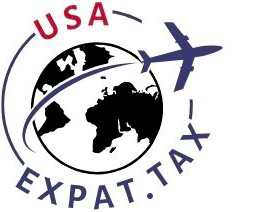Hey there!
If you're a U.S. citizen living abroad, navigating taxes can feel like trying to play chess against the IRS in a foreign language. Two tools promise to help you avoid double taxation: the Foreign Tax Credit (FTC) and the Foreign Earned Income Exclusion (FEIE).
But choosing the right one isn’t always straightforward.
Each has advantages. Each has limitations. And the wrong choice could cost you thousands in unnecessary U.S. taxes, lost credits, or missed opportunities. So today, I’m going to break down exactly when to use FTC, when to use FEIE, and when it might make sense to combine both.
Let’s dive in.
FTC gives you flexibility — but with limitations.
The Foreign Tax Credit (FTC) lets you reduce your U.S. tax liability by the amount of foreign income taxes you’ve paid. But it’s not as simple as subtracting one from the other — there are rules and limits.
✅ Here’s what makes FTC powerful:
-It applies to many types of income — not just earned income.
Wages and self-employment
-Dividends
-Interest
-Rental income
-Royalties
It includes carryovers — unused credits can be carried back one year or forward ten years, allowing you to use them when they’re most advantageous.
But here’s the caveat: the IRS limits the credit to the portion of your U.S. tax that applies to foreign-sourced income.
For example:
Let’s say your total U.S. tax is $12,000, but only 50% of your income came from foreign sources. Then only $6,000 of FTC is allowed — even if you paid $12,000 or more in foreign taxes.
This limitation is known as the foreign tax credit limitation formula, and it’s what prevents many expats from using 100% of their foreign taxes as credit — at least in the current year.
If that happens, the good news is you can carry forward those unused credits and use them in a future year (up to ten years out) when your income or sourcing changes.
✅ Bottom line: FTC is ideal if you live in a high-tax country and your foreign tax is high enough to fully offset your U.S. tax within the IRS formula.
FEIE offers a clean exclusion — but with hard caps.
The Foreign Earned Income Exclusion (FEIE) allows you to exclude up to $126,500 (2024 amount) of earned foreign income from U.S. taxation.
✅ It’s simple and works well if:
-You’re an employee or freelancer-You live in a low-tax or no-tax country
-Your total earned income is under the exclusion limit
But FEIE has strict boundaries:
It only applies to earned income (salary, wages, or self-employment). Investment income, dividends, rental income? Not excluded.
It does not eliminate self-employment tax — meaning you could still owe 15.3% to the U.S. on net earnings.
It can disqualify you from other tax benefits — like the Additional Child Tax Credit, Earned Income Credit, or education credits.
One more thing: once you elect FEIE, revoking it locks you out for five years, unless you get IRS consent. So the choice shouldn’t be made lightly.
✅ Bottom line: FEIE works best in lower-tax countries where FTC may not cover you, and where you're primarily earning salary or freelance income.
FTC is preferred if it fully offsets your tax liability.
In general, if the FTC can fully cover your U.S. tax bill, it’s the better option — especially for long-term expats in high-tax countries.
Why?
-You retain flexibility with carryovers.
-You avoid locking yourself into FEIE’s limitations.
If you live in countries like Germany, France, Australia, or Canada, FTC often wipes out your entire U.S. tax — no FEIE needed.
Just make sure to run the foreign tax credit limitation formula to confirm how much of your tax it will actually offset.
FEIE or a combination may help in low-tax countries.
If you live in a country where income tax is minimal or nonexistent (like UAE, Singapore, or Panama), FTC might not help much — there’s not enough foreign tax paid to generate credit.
In these cases, FEIE can step in to exclude a good chunk of your income from U.S. taxation.
And if your income exceeds the FEIE threshold, you can stack the two:
-Use FTC to offset U.S. tax on income above that
-This strategy is called the FEIE + FTC combo, and it can be powerful — but requires careful income sourcing and tracking.
Pro tip: the IRS limits how much FTC you can claim after using FEIE, so stacking must be done correctly. Don’t wing it.
Use this quick decision chart.
Here’s a basic framework to help decide:
| Scenario | Best Option |
|---|---|
| High-tax country (Europe, Australia) | FTC |
| Low/no-tax country (UAE, Singapore) | FEIE |
| Income exceeds FEIE cap | FEIE + FTC |
| Investment or rental income | FTC |
| You want Child Tax Credit | FTC (FEIE disqualifies) |
Don’t let double taxation sneak up on you.
The U.S. is one of the few countries that taxes citizens no matter where they live. But smart use of FTC and FEIE means you don’t have to pay twice.
In summary:
- FEIE = better for low-tax countries, simple setups, and moderate earned income
- Combination = best of both worlds, if your income qualifies and you do it right
- You’ve got tools. The key is using the right one — and sometimes, the right mix.
Until next week,
—Lisa
EA | Expat Tax Specialist
usaexpat.tax

